Shotgun Mic or Hypercardioid Condenser? Sennheiser MKH-416 vs Audio-Technica AT4053B for Indoor Interviews
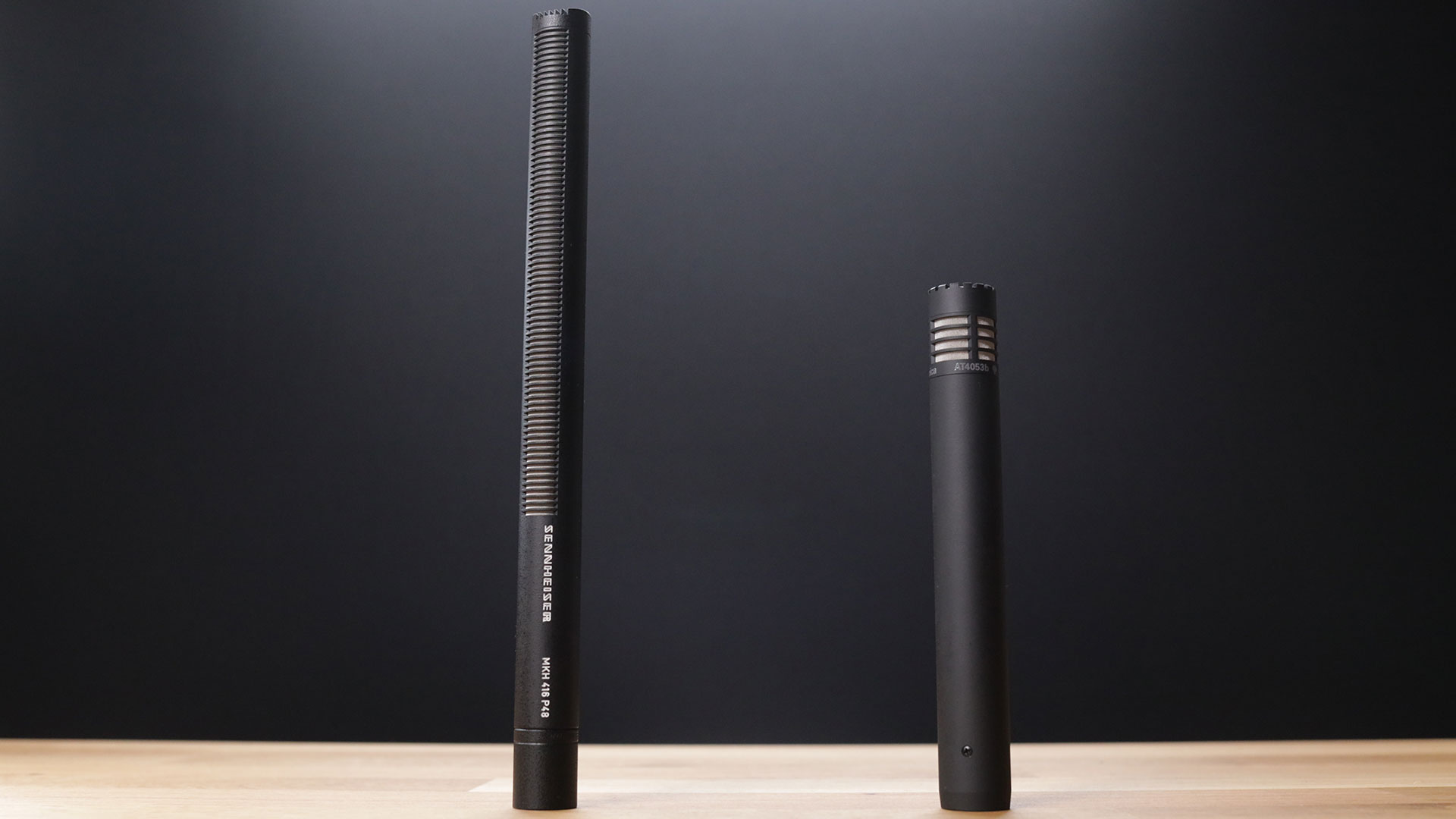
If you've spent any time researching mics to use for filming interviews, you've heard the same recommendation over and over again: "a shotgun mic is terrible indoors, use a hypercardioid small diaphragm condenser or a pencil mic instead."
But if that's true then why do so many filmmakers still use shotgun mics indoors?
The only way to really get to the bottom of this question is well to listen yourself, so i've recently spent ungodly amounts of hours listening to tons of mic tests and comparisons using a good pair of headphones.
And what I found was that practically everyone repeats this same recommendation - don’t use shotgun mics indoors - so we all assume it to be true, but there’s no real good example of how a shotgun mic is worse than a hyper cardioid condenser for indoor interviews.
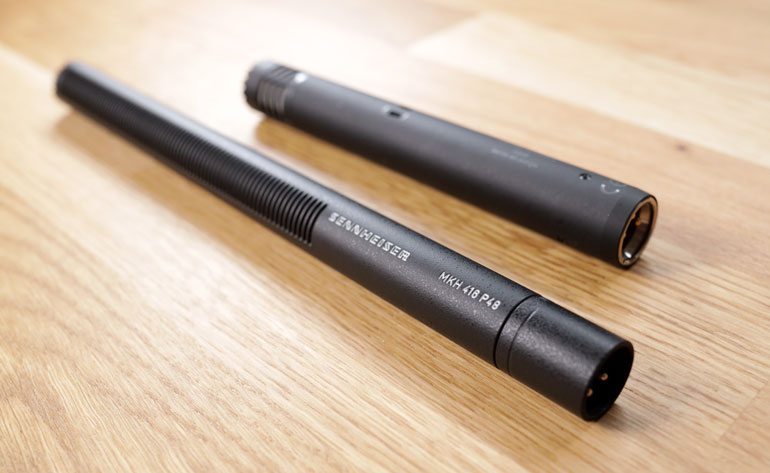
So B&H Photo was kind to loan me some mics so I can get to the bottom of this assumption. I decided on two mics, the Sennheiser MKH 416 shotgun, and the Audio Technica AT4053B hyper cardioid condenser, because they’re widely used by video producers for the specific purpose of recording interviews.
Now I know there are a ton of alternative mics out there, and I’m sure you’ve watched videos comparing the MKH 416 to other shotguns, as well as videos comparing the different hyper cardioid condenser mics out there, but this isn’t about choosing which mic is slightly better than this or that mic. This is about listening to hear if there are discernible differences between using a shotgun or a hypercardioid condenser for untreated interior spaces.
Why Choose the hypercardioid microphone for this test?
So how did I choose this specific hypercardioid, the AT4053B? I know there are a handful of popular hyper cardioid condenser mics out there that are commonly used in film production, but the majority of the reviews, write-ups, and comparison videos are coming from the perspective of a narrative filmmaking, where a boom operator is holding a boom pole over actors in an interior space.
In that situation, the boom operator is constantly repositioning the mic for a perfect capture, going into a professional sound mixer and recorder, and then the files are sent to audio post production where the dialogue is enhanced and matched with other actors, other scenes, and other mics.
So for that purpose, yes, it makes sense to study the different mics out there and their unique characteristics and benefits and flaws, as well as how they mix with other mics. There is a level of perfection and production here that is simply not the case for solo videographers or small video production crews who are shooting interviews.
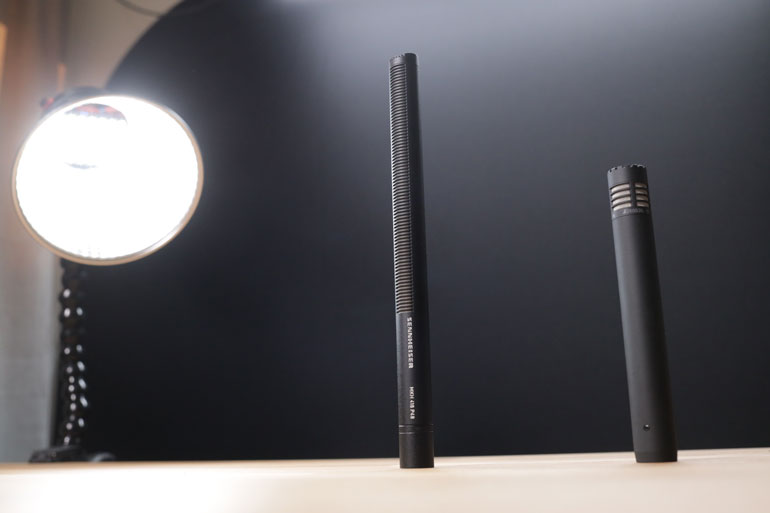
So for an audio professional working on narrative films or TV shows, it makes absolute sense to consider the subtle differences between the high end Sennheiser MKH 50, the beloved Schoeps CMC 641, versus the more budget friendly Audio-Technica AT4053B, the Audio SCX1HC which is often called the poor man’s Schoeps, the Oktava MK-012, or the AKG CK93 Blue Line Series.
But for most of us we’re putting this mic on a stationary boom pole rather than holding it up, which means we don’t have to worry about mic handling, but the interior space we’re shooting in is almost always untreated. In fact, you kind of just end up shooting wherever it looks good and there’s minimal sound distractions, whether you’re doing documentary or corporate video work. And lastly, your mic position is never going to be perfect, because the subjects are not actors and you’re not repositioning the boom pole over them as they move around slightly.

So I picked the Audio-Technica AT4053B for this test because it’s often referred to as the “videographer’s mic” and because I’ve owned one for years and have shot hundreds of interviews with it. I’ve also owned and used the Audix SCX1HC a lot, but I’ve preferred the more warm and rounded sound of the AT4053B.
Again, for an audio professional shooting narratives or a TV series, they may prefer the Audix because it sounds more flat and natural which is better for EQ-ing in post, and matching to other mics, versus a mic that comes with a more finished or altered sound that is bassier by default, for example.
But for a video producer, we want one microphone that’s good out of the box, that needs minimal work in post, we want it to be forgiving if the subject moves a little, and we also want it to work well in a variety interview situations. Essentially, we want one good, dependable mic we can use for all of our interviews.
Why choose the Sennheiser MKH 416 shotgun for this test?
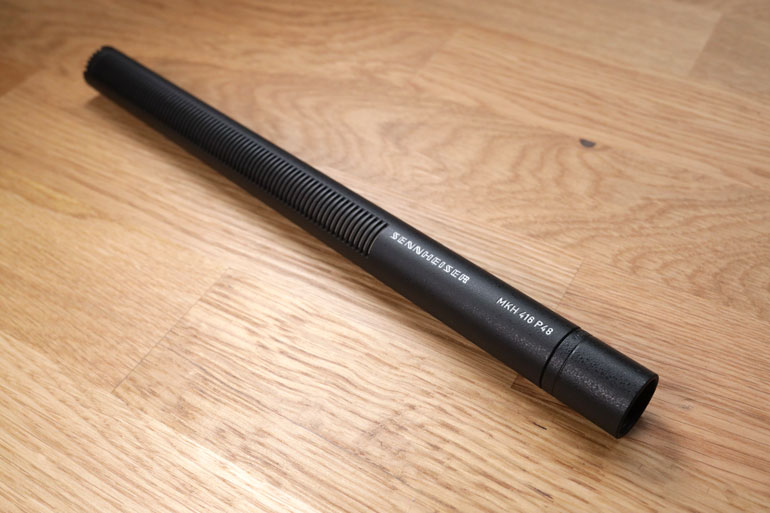
So why not use a shotgun microphone, which is even more versatile than a hyper cardioid condenser mic for video shooters? You could use it reliably indoors or outdoors, you can use it as an on-camera mic, you can put it in a blimp for windy outdoor situations, and you can use it for voice over work.
The MKH 416 has been a standard for broadcast news shooters for many years, it’s used widely for voice overs, it’s bullet proof in any conditions including humid climates, you see it being used and celebrated by just about everyone including Youtubers, and if there’s ever a mic that is requested by a client because they’ve heard the name of one industry standard mic, it’s the Sennheiser MKH 416. So why wouldn’t you just pick this mic as your one mic?
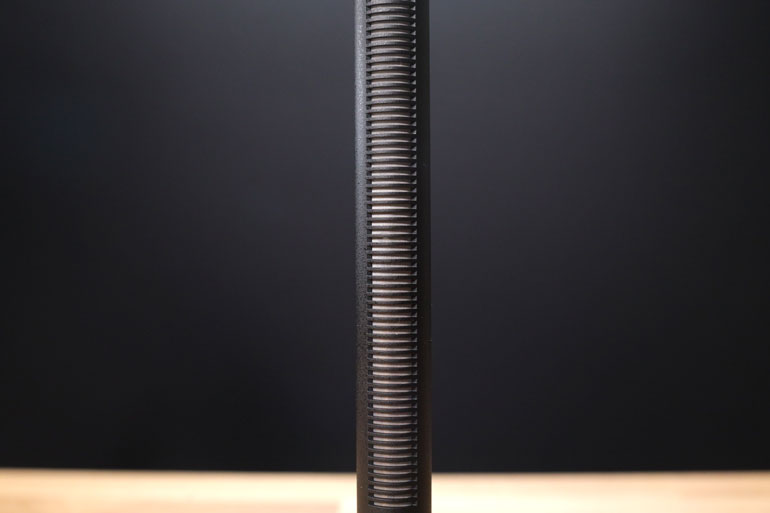
Because time and time again, you hear that the MKH 416 or any shotgun in general is “terrible for indoor dialogue.” More specifically, it’s supposedly a bad choice for rooms where there are reflections and reverb, because the mic is designed with an interference tube to filter out unwanted sound coming in from the sides, but in a poor indoor space the interference tube can create something called comb filtering which leads to phasing issues and can color the off axis sound.
In short, a shotgun will supposedly sound weird indoors, and pickup more reflections in the space, whereas a hypercardioid condenser doesn’t have the interference tube, so it’s a better mic for interior dialogue.
The other thing to consider is that the MKH 416 interference tube makes the actual pickup part of the mic further away, so if you place it side by side with a pencil mic, the subject will actually be much closer to the hypercardioid condenser capsule than the membrane of the shotgun mic.
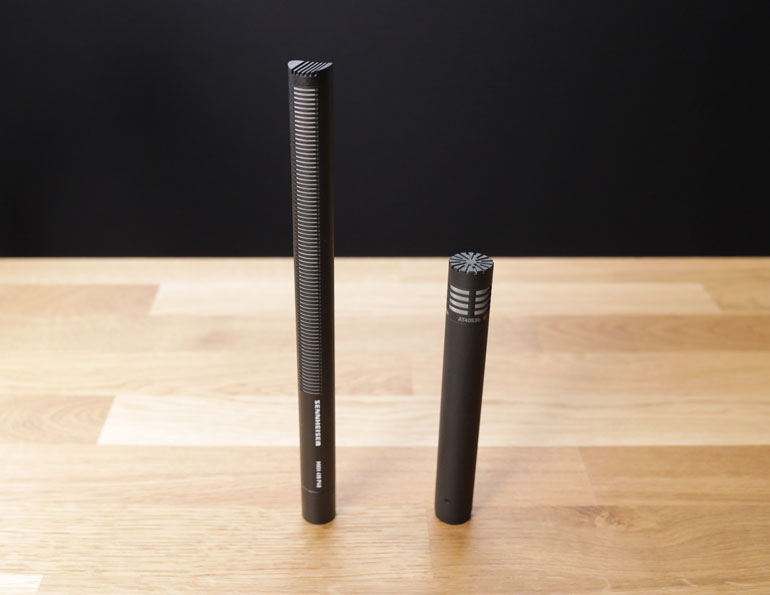
The Goal for the Shotgun vs Hypercardioid Microphone Test
So, these are the assumptions with shotgun mics vs hypercardioid condensers, and again we want to consider these two kinds of mics from the perspective of the video shooter who is not shooting with perfect conditions. We simply want a mic that is a better bet for indoor interviews, and if a shotgun supposedly introduces problems that we can otherwise avoid by buying a different mic, then why wouldn’t we? So we continue to tell ourselves that “a shotgun is terrible for indoor interviews.”
I’m guilty of that myself, I’ve been training other video producers for a long time and have repeated this same advice. But after listening to some examples, I started to realize that in a room with any reflections at all, a hypercardioid does not seem to be an easy band-aid that makes your interview sound like it was recorded in an audio booth. You can’t defy physics it seems.
So maybe the test would reveal that an all-around shotgun like the MKH 416 would perform just as badly in a space that has a lot of reflections? Maybe they’re both fine in good indoor spaces, and they both have faults in poor spaces? And if that’s true, maybe you can then decide on an all-around mic that you like, based on how it sounds or your budget or other considerations, without falling back on the old refrain that “shotguns are terrible for indoors.”
How do these mics respond to izotope rx elements?
Also I want to add that I and many other doc and corporate video shooters use a software plugin called Izotope RX Elements, specifically the dialogue de-noise effect, to reduce the presence of reverb in interviews. I previously used Zynaptiq for years but have switched over to Izotope because it’s more affordable and it just works well enough most of the time without needing much tinkering.
So in this test, in addition to hearing both the MKH 416 and the AT4053B in a variety of rooms, I also applied the Izotope dialogue de-noise to the clips so you can hear how they perform with the default amount of IZotope de-reverberation applied to them. For the garage scene, which is probably the worst space to record dialogue in, I wanted to test a more heavy handed IZotope effect, to hear how each mic does under a lot of sound processing.
The Microphone Test

In all the tests, I placed both mics about a foot and a half from my mouth, and then sometimes would stepped back another foot to test how they do a little further away. You’ll hear me say when I do this. I also moved around the mic to test how the mic sounded if a subject moves off-axis.
Sometimes a subject takes tiny steps closer and closer to the camera as you’re interviewing, so I wanted to hear if the mics showed a discernible difference in capturing audio that’s not ideally placed. Of course you’ll hear these mics in mono, so don’t expect to hear sound going from your left ear to your right ear.
And finally, I recorded both mics to a Sound Devices MixPre-3, and had their gain adjusted in the mixer so that they were approximately at the same level at the time of the recording. I didn’t record video because I don’t think you need to stare at my face for more than you already have, and because I don’t want the visual of the space to be the focal point while listening to the test. But I do have some notes about the spaces in the video description, along with chapter markers, in the video.
Watch the full test in the video below.
My Conclusions after the Test
Ok so I originally was going to share my thoughts about the test after you’ve had a chance to listen to it, but realistically many of you aren’t going to get through the test to the end anyway, so I’ll just share them now. If you don’t want my opinions to affect your neutral listening, then you are welcome to skip this section until after you've heard the full test in the video at the start of this post.
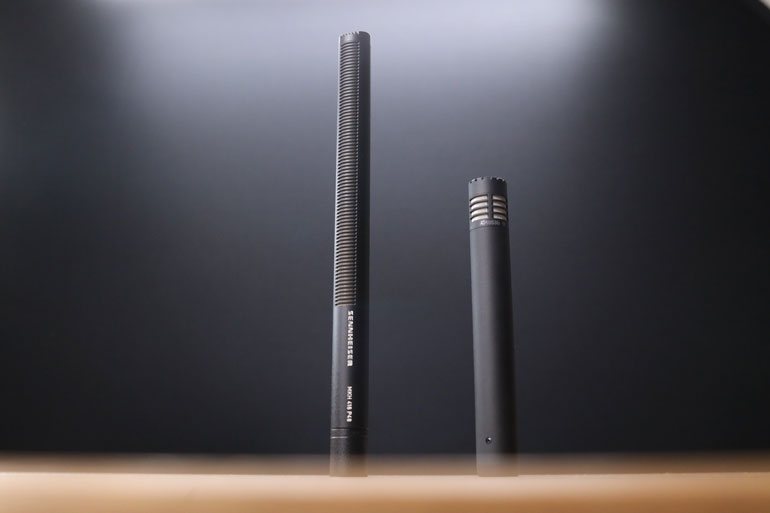
In a nutshell, I found there to be no advantage to the AT4053B in any of the spaces with a lot of reverb, or in an untreated room with a lot of sound bouncing around. It does not sound like the MKH 416 is picking up more reflections. So to me, the assumption that a hyper cardioid condenser is better than a shotgun for indoor interviews is not really the case. Both mics picked up the reflections in a similar way.
And in fact, to my ears the Sennheiser MKH 416 actually sounds better in all of these spaces. The AT4053B sounds more muffled, whereas the MKH 416 has a clearer, more well-rounded sound. The AT4053B might be a little more natural than the 416, like what my voice actually sounds like, whereas the 416 sounds like a recorded version of my voice for broadcast. But I actually prefer that, I like the way the 416 sounds more produced, rather than the natural and not as interesting sound of the AT4053B.
And in the closet where I wanted to test out the mics for voice over, the AT4053B had noticeable plosives which ruin the take, whereas at close proximity the MKH 416 performed perfectly well without any plosives.
When I apply Izotope to both mics, I also find that the MKH 416 retains more of its presence, whereas the AT4053B sounds even more muffled. In the garage space where I pumped up the Izotope effect, you can hear the AT4053B noticeably fall apart under the sound processing.
Lastly, I found the AT4053B to have significantly more handling noise than the Sennheiser MKH 416, using the same mic shock mount on both of them.
So overall, I’m surprised to hear that the AT4053B doesn’t offer any significant advantage for interior interviews, at least for me. So I’ve purchased the Sennheiser MKH 416 shotgun and returned the Audio-Technica hyper cardioid condenser.

It’s not only the sound quality that helped me make that decision, it’s because the MKH 416 is bulletproof, and I know as a solo video producer I’m likely to drop it at some point. I have actually done that with the AT4053B a couple years ago, which broke the capsule and cost me $250 to replace. Whereas with the MKH 416, I see completely beat up 20 year old versions on ebay still selling for more than half their value.
With that said, enjoy the test and let me know if you agree or disagree with me in the comments below. I hope this video will help finally bury the often repeated advice that “shotguns are terrible for indoors.”
Gear Used:
Sound Devices MixPre-3 multitrack recorder
RODE VideoMic NTG used to record the intro